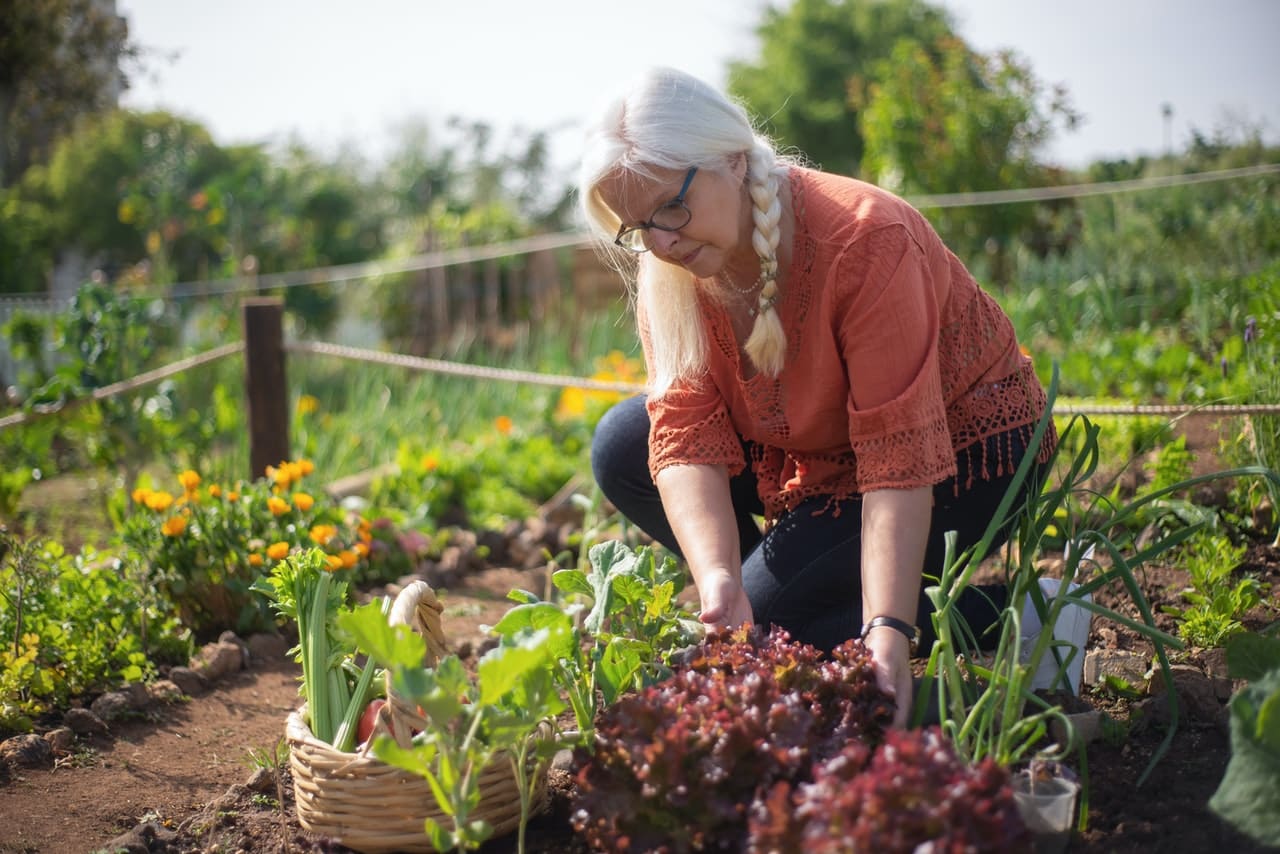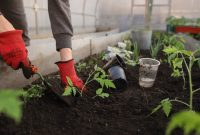get started
Embracing sustainability in your garden isn’t just about planting seeds; it means taking care of the earth. This guide covers many things about sustainable gardening. It contains ideas, tips and personal stories that will help you transform your garden into a beautiful eco-friendly retreat.
How to define sustainability in gardening
Sustainability in gardening means using methods that are good for the garden and the people who care for it in the long term, but that are also good for the world. It includes decisions about which plants to grow, how to use resources, and how to encourage diversity.
Why sustainable gardening is important
Environmental benefits
Sustainable agriculture helps the environment by using less water, and fewer chemicals and improving soil health. This holistic approach makes the environment better, meaning the planet will be healthier for generations to come.
benefits to the economy
Besides being good for the environment, organic farming also saves you money. By using recycled materials and doing something cheap, you can save money and contribute to a healthy circular economy.
Make plans for a sustainable garden
Choose native plants
By choosing plants from your region, you protect the environment and allow your garden to grow well with less work. Native plants have become accustomed to the conditions in which they grow, requiring fewer resources and providing a safe home for the area’s wildlife.
effective water management
By using smart water management techniques such as drip irrigation and rainwater harvesting, you can keep your garden well watered while reducing the amount of water wasted. Working with nature is an important part of sustainable agriculture.
How to grow a green garden naturally
How to compost
When you turn cooking and garden waste into nutrient-rich compost, your soil improves. Composting allows you to grow plants without using artificial chemicals and create a closed loop system in your garden.
A completely natural way to obtain
Say goodbye to dangerous chemicals and use natural methods to get rid of pests. By using companion plants and attracting beneficial insects, you can ensure your garden continues to grow without sacrificing sustainability.
Take biodiversity seriously
Create a habitat for wildlife
Add bird houses, bee-friendly plants and butterfly shelters to your garden to make it a safe place for animals. Planting many different types of plants and animals in your garden will make it stronger.
Strategies for planting together
Pairing your plants carefully will not only make the most of your space, but also help them grow and repel pests naturally. Learn how to place items next to each other so that your garden grows well and stays balanced.
Design a good garden
The rules of permaculture
Plan your garden using permaculture concepts, focusing on long-lasting and self-renewing methods. Replicate natural communities and create a self-sustaining, peaceful environment.
Intelligent crop irrigation system
Spend money on a smart watering system that adjusts water usage based on the weather. Technology such as soil moisture monitors and rainwater valves can ensure that your garden lasts longer.
soil health and fertility
Benefits of using mulch
Mulching isn’t just for looks; It is also an important way to keep the soil moist, control weeds and maintain proper soil temperatures. Learn how to add mulch to your garden to keep it healthy.
Why testing your soil is important
Test your dirt regularly to see if it is healthy. Get to know the composition and nutrient level to adjust your planting and ensure that you lay a good foundation for your sustainable garden.
Long-term garden maintenance
The green way to kill weeds
Say goodbye to dangerous pesticides and embrace eco-friendly weed control methods. Whether you pull weeds by hand or use a natural herbicide, you can keep your garden weed-free without harming the environment.
How to prune plants to make them healthier
Learn how to properly prune your plants to keep them healthy and strong. Learn when and how to prune for optimal growth and a consistently good garden.
Use clean, renewable energy
Garden lighting that burns in the sun
By lighting your garden with solar lights you can save money on your energy bills and help the environment. By using renewable energy,
Artwork from old books or old paintings help the world economy.
How to recycle flower pots
By upcycling items you can create unique planters that add a touch of creativity to your garden. Upcycling not only reduces the amount of waste, but also gives your garden character and charm.
giving and teaching
community garden program
Get involved in your community by starting a shared farming project. Collaborate on community projects, classes and events to build community and teach people how to care for the planet.
Teach children to be green and environmentally friendly
Teach the next generation to care for the environment. Involve children in gardening activities. This way they learn how to care for plants and how important it is to be kind to the earth.
Cost-effective and sustainable solutions
Environmentally friendly products that won’t break your wallet
Find garden supplies that are both inexpensive and environmentally friendly. Choose eco-friendly products like trash cans and sustainable mulch that won’t break the bank.
Do-it-yourself garden projects
Start a DIY project that helps the environment. Create a compost system, rain barrels and explore other eco-friendly projects to add a personal touch to your garden.
Lasting Seasonal Gardening Tips
Preparations for the winter garden
Prepare your garden for winter in an environmentally friendly way. Protecting tender plants and using winter cover crops are two ways to ensure your garden grows well all year round.
Green things to do this summer
Beat the summer heat in a healthy way. During the warmer months, you can keep your garden strong and healthy by taking steps to conserve water, choosing plants that can tolerate heat and creating shady areas.
Choosing greenery in your garden: a personal journey
My story of change
Starting a journey towards sustainable gardening has not only transformed my garden, but also my view of the world. See how a traditional courtyard transforms into a sustainable oasis.
What I have learned is
I learned the power of sustainable practices by making mistakes and learning from them. Each lesson, from the joy of growing organic vegetables to the joy of seeing animals return to your garden, illustrates the importance of being environmentally friendly.
Frequently Asked Questions
How do you ensure a sustainable garden?
Organic methods such as choosing local plants, properly managing water, using compost and natural pest control are all part of creating a sustainable garden.
How do you choose the best plants for a sustainable garden?
Native plants that adapt to their environment are perfect for long-term gardening. They are easier to care for, help wildlife and improve the environment.
Is collecting rainwater a good idea?
Certainly. Rainwater harvesting benefits the environment, reduces the need for external water sources and provides a steady flow of water for your garden.
How can I get pollinators to come to me?
By planting pollinator-friendly flowers and providing a habitat for bees and butterflies, you can access these important garden helpers and increase biodiversity.
Should you mulch your plants to make them last longer?
Mulching is a technique that helps the environment in many ways. It keeps the soil moist, reduces pests, keeps the soil at the right temperature and improves overall soil health.
Are fertilizers always bad for you?
Chemical fertilizers quickly provide nutrients to plants, but can be harmful to the land and environment. Sustainable alternatives, such as recycling, are better for the environment.
In summary
Being eco-friendly in your garden can be a transformative journey for the world and your plants. You can help make the world a better, more sustainable place by doing good things for the environment, promoting nature and sharing your knowledge.





